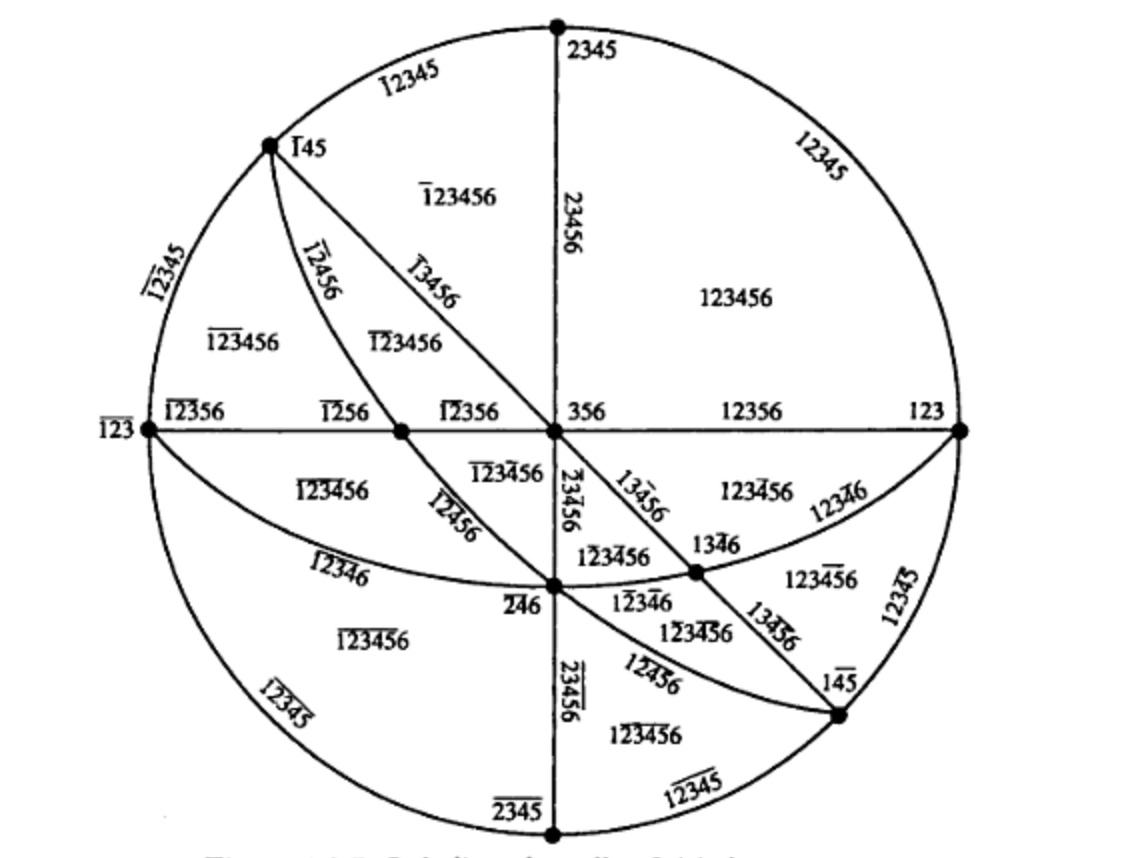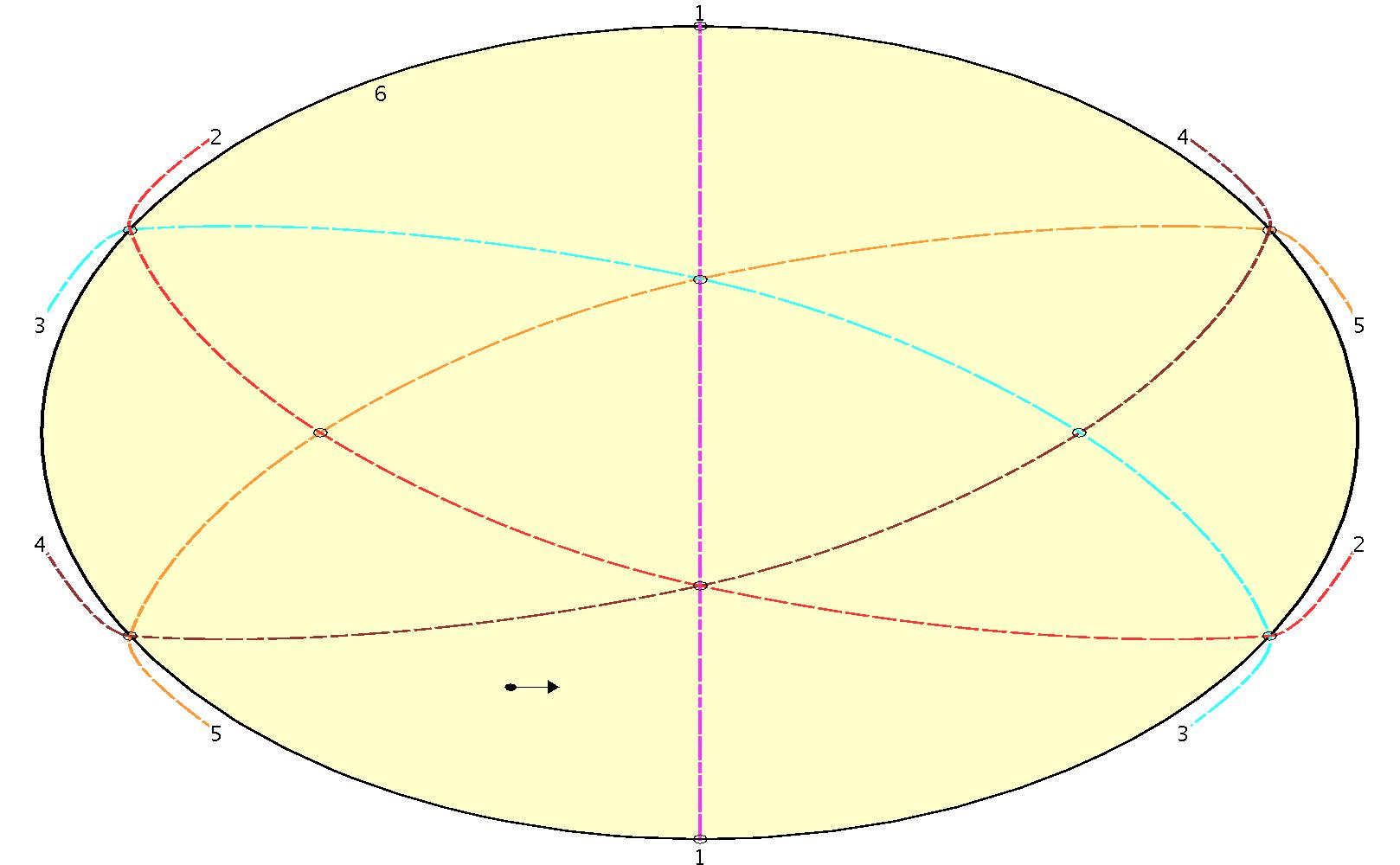This Oriented Matroid is the introductory example from Oriented Matroids
by
Björner, Las Vergnas, Sturmfels, White and Ziegler, [1999].
One of the ways in which they describe it, is with the following picture:

This is essentially the same picture as our sixth projection.
They also define it in terms of the positively and negatively oriented bases. The orientation of a basis depends on the order in which the elements are considered. In each of our projections, we consider the elements as ordered, first: the element projected to infinity, and then the other elements in order going along the line at infinity. This differs from their ordering (which is 1, 2, 3, 4, 5, 6). Hence, depending on the parity of the number of swaps of ordering, we may agree or disagree with their definition of the orientation of a particularly basis.
In addition, we show the orientation of a basis which includes the line projected to infinity simply by the ordering along the line at infinity.
In Björner et als. presentation of this matroid, in its original orientation, they have the following posivie bases:
123, 125, 126, 136, 145, 146, 156, 245, 246, 256, 345, 346, 356
And the following negative bases:
134, 234, 235
The positive bases involving element 6 are all represented by the ordering along the line. Some of the other bases have their orientation changed, because we have swapped the order of 2 and 3, and 4 and 5.
The picture below is very similar to their picture above, rotated through 180°. They show the positive face (labeled 123456) in the top right, whereas we show the positive face in the bottom left, labeled with an arrow. Their other labels can be reconstructed in our diagram by remembering that the arrow is in the positive face, and that every time we cross a pseudoline in the arrangement the sign of that element changes. Also, any point or edge on a pseudoline is unsigned for that element.
Moreover, our diagram shows the positively and negatively oriented bases as follows. For any three elements, not including the element at infinity:
Notice that this simple visiual indication of positive and negative bases requires the origin to be in a face with one of its edges being the line at infinity. In some cases, such as this other projection, this requires that the oriented matroid is reoriented before being represented as pseudolines.
1< 3, 2< 5, 4
